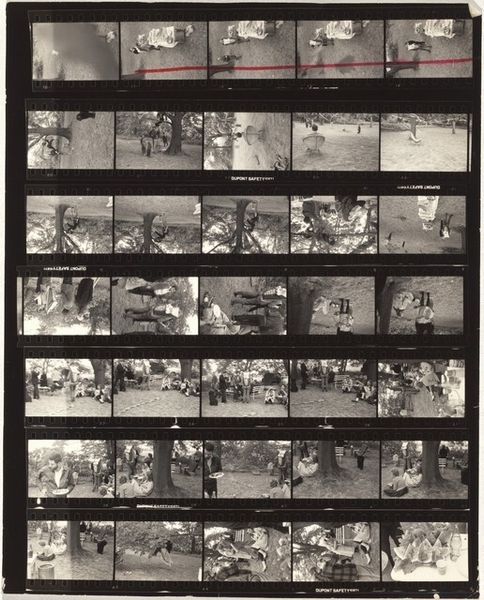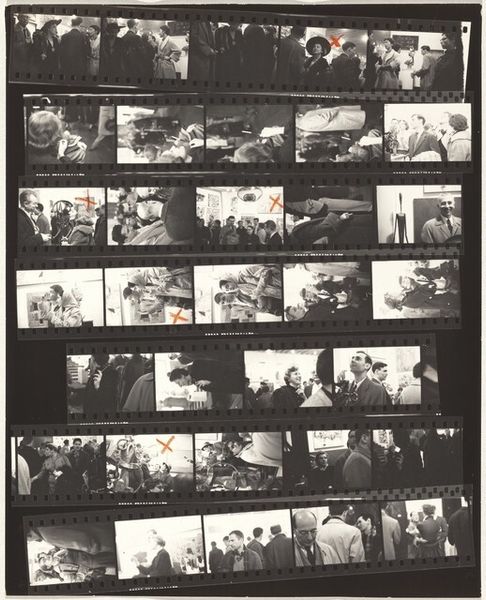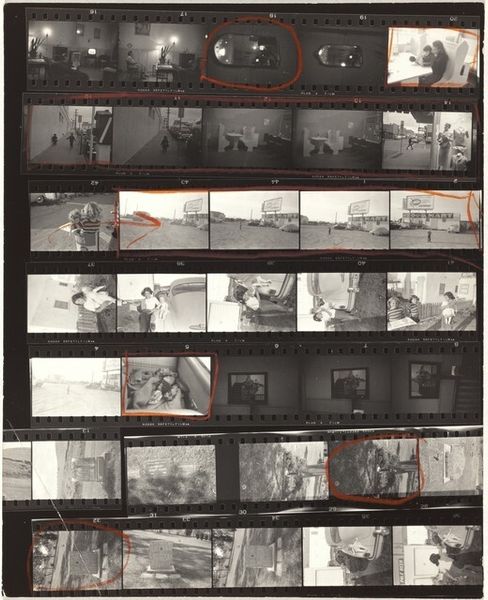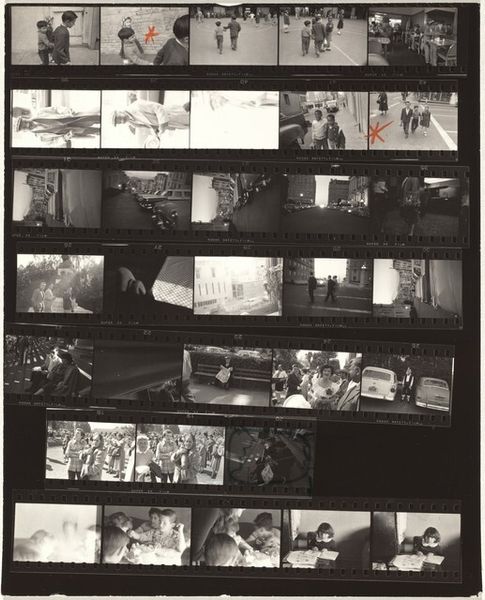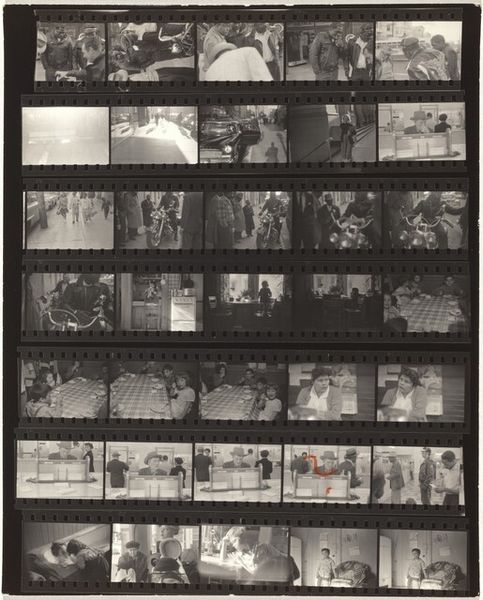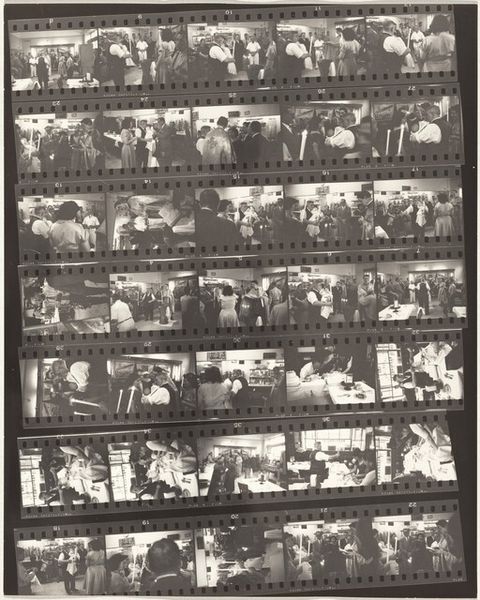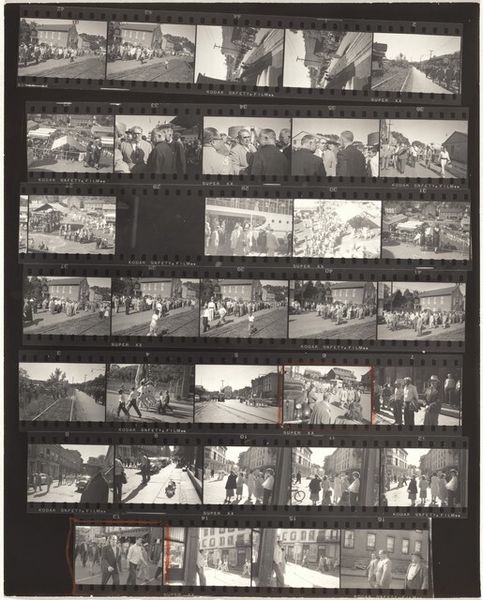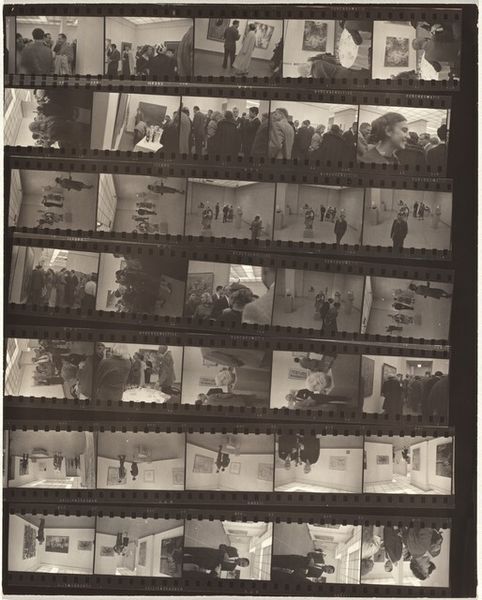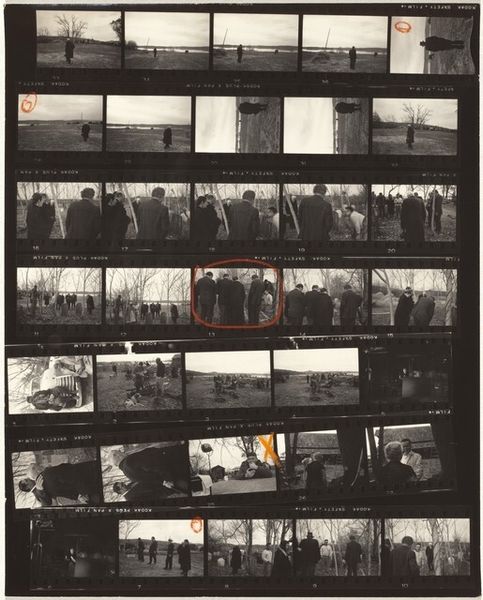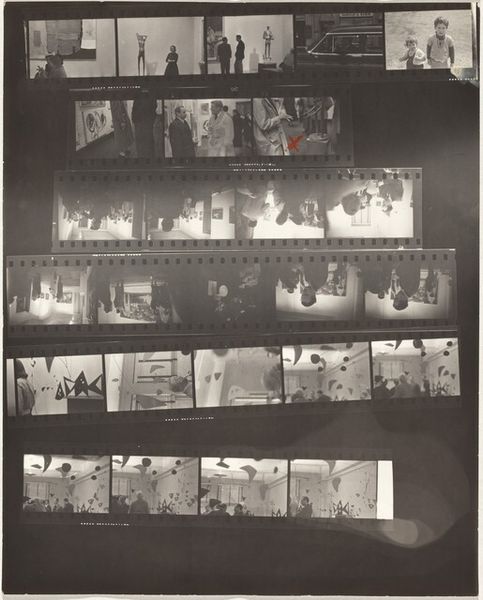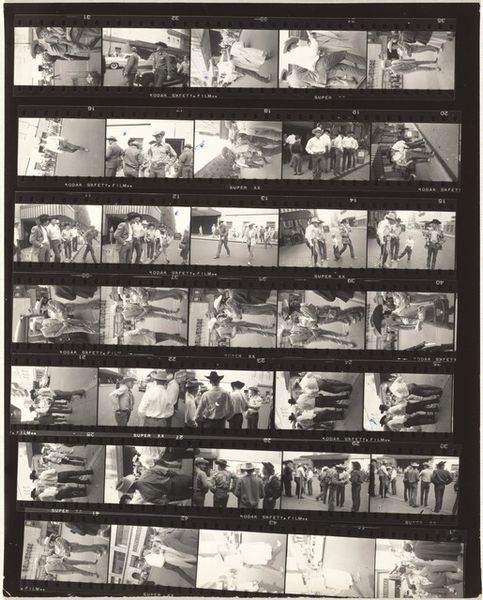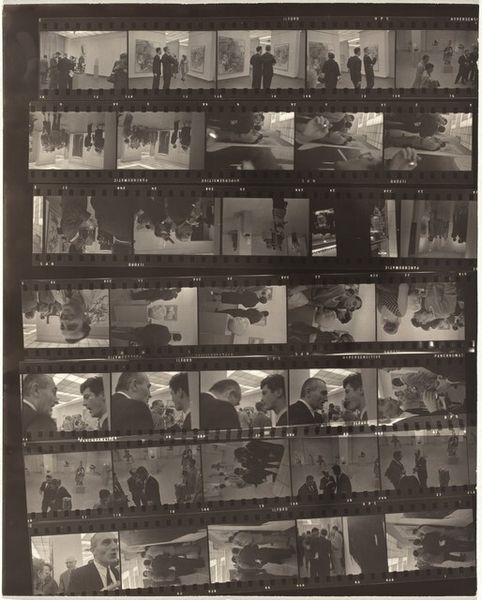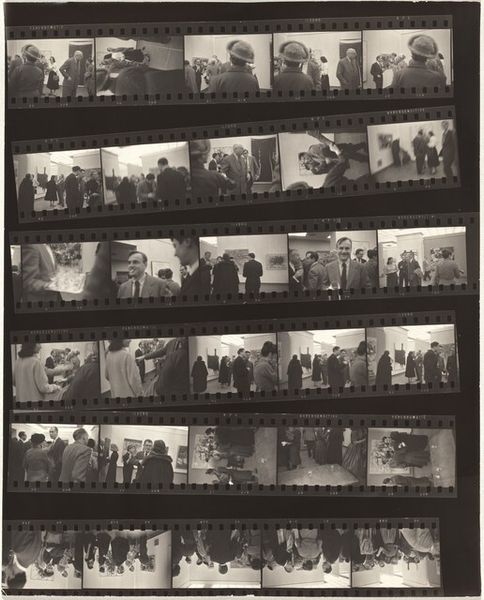
contact-print, photography, gelatin-silver-print
#
portrait
#
landscape
#
contact-print
#
social-realism
#
photography
#
gelatin-silver-print
Dimensions: overall: 25.3 x 20.2 cm (9 15/16 x 7 15/16 in.)
Copyright: National Gallery of Art: CC0 1.0
Curator: What strikes me immediately about this contact sheet is the high-contrast tonality across the whole image; the depth of the blacks and grays is profound. Editor: We are looking at Robert Frank's contact sheet entitled "Filming Elia Kazan's \"Wild River\"--Tennessee 23," likely from 1959. It provides a behind-the-scenes glimpse into the making of Kazan’s film, a movie dealing with the contentious topic of the Tennessee Valley Authority displacing families to make way for dams. Curator: Yes, you can feel the story rippling through the images. The overall grid composition organizes many characters; many wearing hats and dressed plainly, staring back at the camera or involved in some act on a movie set. How did the movie shape the social understanding of that period? Editor: The film’s depiction of rural displacement was controversial at the time. The image speaks to the era's complexities, with the narrative playing a vital part in social discourse around modernization. Frank's image underscores these complexities of representing real lives for entertainment. Curator: There's a starkness to the portrayal of the subjects, even on the periphery. You get the feeling these lives were not always front and center and their stories only matter in certain political times. How does this contact sheet reflect Frank's view of America during that period? Editor: As part of the burgeoning social realism, the picture aligns with his groundbreaking project "The Americans" and presents the grit of life beyond popular American narratives, beyond the movies; thus offering a visual dialogue about identity and the reality in postwar America. Curator: I notice a fascinating dissonance, given its documentary intentions: the photographer leaves edits and even circles on a number of frames of this print, thereby turning it into something self-referential that emphasizes the image’s manufactured-ness. I wonder, should this act also lead us to be more skeptical of documentary in general? Editor: Absolutely, because it showcases the photographer's subjectivity while simultaneously providing an insightful social statement, one about labor and social representation. Curator: The image gives us so much to think about regarding visual strategies. Editor: Agreed. The intersection of the medium's aesthetic choices with social commentary makes it timelessly pertinent.
Comments
No comments
Be the first to comment and join the conversation on the ultimate creative platform.
